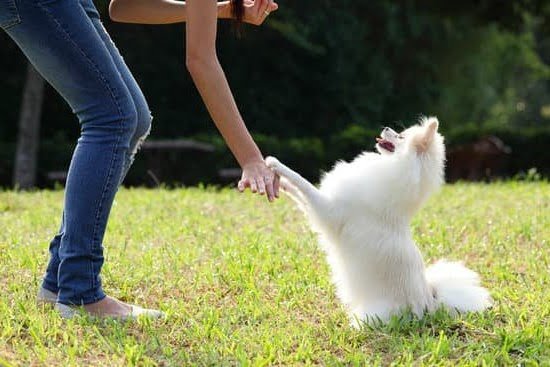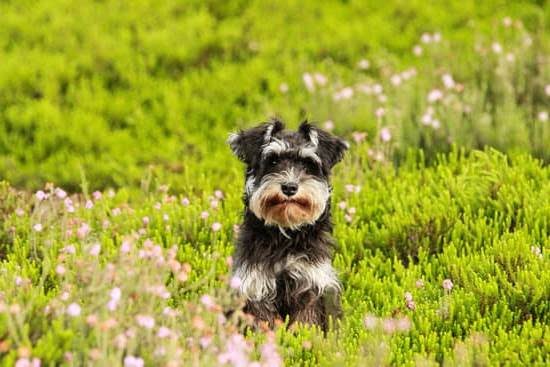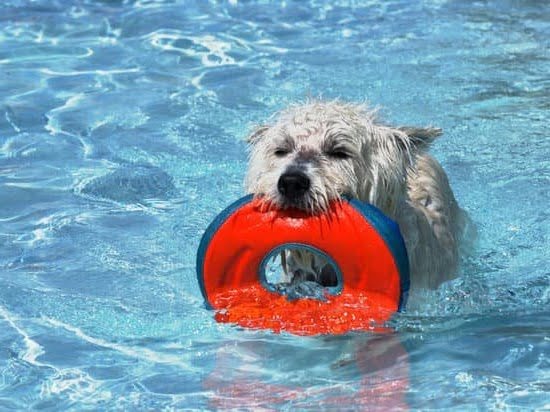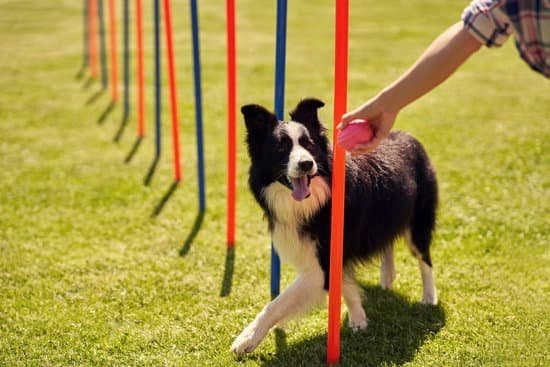Introduction
Potty training is an important part of responsible pet ownership, and it’s not always easy. The key to success is patience and consistency. Take time before the training begins to make sure everyone in your household is following the same approach. Here are some tips for potty training your dog successfully:
1. Start by taking your pup outside frequently—every two hours during the day (or as often as possible) and first thing when they wake up in the morning. Give plenty of verbal praise each time they go in the right spot.
2. Create designated potty spots in your yard where your pup can use the bathroom consistently. Take them to these spots every time you head out so they get used to the routine of going to a specific area, which can help create good habits and make clean up easier.
3. If there are times when you can’t take them out right away due to other obligations or activities, set up puppy pads or a litter box inside for them that you can clean regularly if necessary. This should only be used as a last resort though; it’s best not to give your pup too many options!
4. If accidents do happen indoors, stay calm and never scold or punish them—your pup may associate their fear with urinating inside, which could lead to further issues down the line. Instead, gently remove them from the spot and take them outside for another attempt at pottying correctly this time around!
5. Use positive reinforcement whenever possible and reward your pup with treats after they do something correct like pottying in the right spot or staying inside when needed (like during thunderstorms). This helps reinforce good behavior that you want duplicated!
Preparing Your Home
In order to successful potty train a dog and get them accustomed to their new routine, it is important to set up a designated and dedicated spot for bathroom business. This space should be outfitted with various materials that make it inviting and comfortable while also being convenient and easily accessible when necessary. Consider adding a potty pad to your space – this can be helpful for pups that have accidents but gives them an area to use instead of the floor since you may not always have time to let them outside. Providing a small section of artificial turf in the spot can help stimulate the instinctive behaviour of dogs seeking grassy areas, potentially reducing undesirable mistakes in other locations. Additionally, including toys or a chew bone can help your pooch to associate their bathroom spot with positive reinforcement, encouraging good behaviour during training sessions. Lastly, proper ventilation and patience are essential when setting up your pup’s potty training space!
Understanding Your Dog
When attempting to potty train a dog, it is important to look out for different body language cues and signals. When your pup needs to go, they might start pacing back and forth, barking or whining. Pay attention to where these behaviors occur, as this can give you clues about what area of the house your pup will use for potty breaks. You should also watch for any sniffing or circling in an area – this is often a sign that your pup needs to go to the bathroom.
By observing your dog’s behavior and knowing when the best time for potty breaks are (first thing in the morning and after meals or naps), you can better prepare yourself for success. It’s essential not to punish or exhibit negative behaviors toward your pet during potty training – they need positive reinforcement in order to learn effectively. Consider giving them treats after successful potty trips outdoors and offer verbal praise every time they reach their destination.
Finally, be sure to clean up messes quickly with an enzymatic cleaner; this will help eliminate odor so that your pet isn’t attracted back that same spot again in the future. With consistency, patience, and lots of positive reinforcement – you’ll train your pup effectively in no time!
Establishing a Schedule
When it comes to potty training your dog, establishing a schedule is key. To get your pup on track, it’s important to set aside certain time frames throughout the day when they have a designated potty break. It can be helpful to create both a regular and predictable routine for your pup as this will help them learn better where, when and how often they should relieve themselves. Most experts recommend that you take your pet outside at least every 3-4 hours, or if they’re still young or unhousebroken, even more frequently – such as after meals and naps. Make sure these scheduled trips are to the same spot each time so that your pup associates the spot with going to the bathroom. Additionally, be sure to remove their collar so that there aren’t any distractions during their potty break. A good rule of thumb is that dogs usually need to bathroom about 15 minutes after eating or drinking, so use this as a guide for when you should take them outside for potty breaks. Ultimately, sticking to a regular schedule and having consistent rules for bathroom breaks will help make potty training smoother for both you and your pup!
Using Positive Reinforcement
When potty training a dog that won’t listen, it is important to use positive reinforcement. Start by rewarding good behaviours with treats or verbal praise and avoiding punishing the dog for mistakes. This helps encourage the pup that desired behaviour will positively be rewarded each and every time they choose to do it. Since dogs learn by association, they begin to understand what action leads them to receive a reward. A consistent reward schedule can help ensure success in this regard.
Negative reinforcement such as physical punishment is not effective when potty training as it can create fear and anxiety in the pup which can lead to behavioural issues down the road. Instead, we recommend shifting focus onto positive reinforcement methods of praise and treat rewards! By ignoring or redirecting bad behaviours without punishing them you are teaching your pup that their misbehaviour has no payoff and eventually they will stop engaging with those actions altogether.
Focus on giving the pup ample opportunity to “go” using simple commands like “go potty” or “hurry up” before giving them attention or a food reward so that they associate those words with going outside and doing their business instead of urinating inside or having accidents while inside your home. Additionally, keep an eye out for signs that your pup needs to go such as continuous sniffing around floors, suddenly running around trying to locate somewhere suitable, startled looks, twitching of tails; be prepared for these signs so you can bring your dog outside quickly before any accidents happen!
Mastering the Basics
The basics of potty training a dog involve establishing a routine and remaining consistent. The key to successful potty training is to learn the individual behaviors of your dog and then adapt their schedule accordingly. Here are some basic steps for potty training your pet:
1. Establish an appropriate area for your dog to do their business: This could be either outdoors or indoors depending on the breed of your dog, but typically you will want to have a designated spot away from where they spend most of their time. For example, many people choose to set up a specific room in the house, such as a laundry room or bathroom, that can be dedicated as the ‘potty spot’.
2. Introduce rewards: Positive reinforcement has been proven as one of the best ways to train animals and dogs are no exception! When your pup successfully goes in the right place, it’s important that you praise and reward them with treats or toys. This will help encourage them to continue using the same spot each time they need to go, so consistency in rewarding good behavior is key.
3. Be mindful of your pup’s signals: Paying attention to signs from your pet will be helpful in indicating when they need to use the bathroom but may not necessarily know how/where to do it yet – these can come across as pawing or sniffing around places where they may have gone before; if you notice your pup doing this then take them outside/to their designated spot immediately (or even better – just before). This way you can reinforce good behavior by praising them when they finish their task correctly inside or outside!
4. Set boundaries for accidents: If accidents occur, it’s important that you don’t punish your pet but set boundaries nonetheless so that he/she understands what’s acceptable behavior within the home; this might mean closing off certain rooms while they learn how and where to go accordingly after being taken out at regular intervals throughout each day – especially if young puppies who may not have developed full bladder control yet!
Continual Reinforcement
One of the key aspects to successfully potty train a dog that won’t responds is continual reinforcement. Dogs are creatures of habit, so you want to train them to recognize and practice behaviors that you approve of, not ones that you don’t.
To do this, start by using positive reinforcement as soon as you notice your pup following the steps needed for successful potty training. This could be something simple such as offering a particular type of treat every time your pup goes in the designated bathroom spot or outside area. Additionally, you may want try praising and petting each time they show progress in their process. Even if they don’t seem keen on it at first, keep repeating these positive associations whenever possible until it becomes part of their routine behavior.
Another helpful technique is to administer regular rewards when your pooch is displaying desirable behaviors such as going to the restroom outdoors or in its designated spot. This could include giving treats or preferred toys each time they urinate or defecate correctly. As always remember to praise them every time they show progress!
It’s also important to redirect bad habits with good alternatives. If, for example, your pup tends to mark indoor furniture when nobody is watching – which actually can be quite common – make sure the area remains off-limits until it learns not to go there in the first place and replace by taking them outdoors more often instead. With enough repetition and patience, your pup will learn what qualities are desirable and eventually those will become second nature!
Remaining Consistent
Once your dog has mastered the basics of potty training, it is important to remain consistent with their routine. Make sure that you take them outside at the same times every day and stay consistent with the rewards system. Take your pup out first thing in the morning, shortly after meals, and last thing at night before bed. Rewards should be given consistently right after they finish off their bathroom business. And if there are any accidents be sure to clean them up properly using an enzymatic cleaner as this will help discourage repeats. Be firm but positive when addressing any potty mistakes and make sure not to scold them too harshly as this will only lead to confusion and a lack of trust from your pup. Additionally, keep an eye on potential potty cues such as sniffing or walking in circles so that you can catch them early on and direct them outside before things get messy. Finally, try keeping a journal of when your pup uses the bathroom so you can start to understand their individual patterns better and become more aware of their personal habits.
Dealing With Setbacks
If you encounter a setback while potty training your dog, there are several strategies that you can use to troubleshoot the issue. Firstly, it’s important to remember not to scold or punish your pup. This will only make him anxious and less likely to cooperate. Instead, try analyzing the situation and uncovering what led up to it if possible. Furthermore, don’t forget that most dogs need consistency in order for them to progress and understand what is expected of them – so strive to keep your response and expectations consistent in every situation. If your pooch strains their bladder for longer than normal periods, consider adjusting their meal times or break times accordingly. Lastly, think about the timing of when you take them out for walks or potty breaks – is it at the same time every single day? No matter how well-behaved your pup may be – keeping a consistent schedule will help with training them for successful outcomes each time!
Final Questions
1. How long will it take to potty train my dog?
The amount of time it takes to potty train a dog depends on the breed and personality of your dog, as well as their age and health. Generally, though, most dogs can be successfully potty trained in about 4-6 weeks if provided with consistent and positive reinforcement techniques. If there are certain behaviors or habits that your dog is exhibiting which could be contributing to their lack of success with potty training, such as compulsive digging or marking territory, a longer timeline may be necessary. Additionally, puppies may require more patience and a greater effort from you during this process.
2. What should I do if my dog has an accident in the house?
It is important not to reprimand your dog for having an accident in the house as this could actually worsen their progress with potty training. Instead, try not to make a big fuss over the accident and simply clean up the mess using vinegar diluted in water or an enzymatic cleaner so that they do not become conditioned to repeat the behavior whenever they smell these products. You should also work on identifying potential triggers or behaviors that might lead to them using the restroom indoors and work on replacing those behaviors with something more acceptable such as offering them rewards when they go outside properly instead.

Welcome to the blog! I am a professional dog trainer and have been working with dogs for many years. In this blog, I will be discussing various topics related to dog training, including tips, tricks, and advice. I hope you find this information helpful and informative. Thanks for reading!





